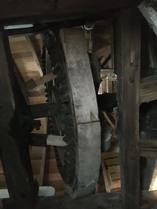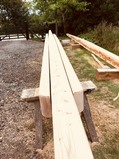


© Smithdale Millwrighting Ltd 2022 | Contact Webmaster



Maintenance, repairs or one-off contracts, Smithdales will quote you a price for a job - stick to it, and get it done!
How we work

We plan individual maintenance schedules for each site, depending upon need - for example parts such as caps, sails and wheels are turned, bearings and gears greased - and also anticipate when greater works will be required so they may be costed and scheduled.
What we can do for you

Maintaining a mill in the modern day
Although looking after a mill may be an unequalled privilege, it is also a tremendous responsibility and liability. Most of the cards seem to be stacked against you - listing and planning demands along with ever decreasing funding and a limited supply of skilled craftsmen being the primary issues.
Whilst training as a Millwright, Paul was quite shocked by the vagueness within the industry; as an Engineer he was used to far more disciplined working and although work on buildings and machinery sometimes hundreds of years old is less predictable, he tries to be as transparent and precise as possible.
These mills were built in a different age with different expectations, and we try to combine the old with the new to achieve the best value, and the two areas which need consideration are the role of the miller and millwright, along with the use of the mill.
The everyday maintenance of the mill was down to the person on site - the miller. Greasing, oiling, adjusting and checking were everyday procedures, and routine repairs were carried out within the individuals skill. The Millwright was only called in for major work and his annual check.
Mills were made to work - as hard as they could. A day without stones turning was a day without income, and a day without the pump running was putting the marshes - and many people’s income - at risk.
The areas most affected are the sails on a windmill and the wheel on a watermill - the ‘energy traps’.
In use, both are subjected to the ravages of water, but when out of use, the elements can cause even greater damage since the parts are designed to turn, not remain stationary.
Budgeting to avoid disaster!
Rule 1:
DON’T PRETEND IT’S NOT GOING TO COST MONEY TO MAINTAIN YOUR MILL.
Rule 2:
See Rule 1!
From our experience, the best way to get good value (and a minimum of shocks) is to plan maintenance over 25 years. While this may be a longer period than some owners consider, the mill will need it, and will benefit from a long term scheme, independent of ownership.












| Millwrighting Services |
| Smithdales at Hunsett Mill |
| Clocks |
| Clock restoration |
| The Big Black Clock |
| Longcase Clocks |
| Wall Clocks |
| Longcase Stock |